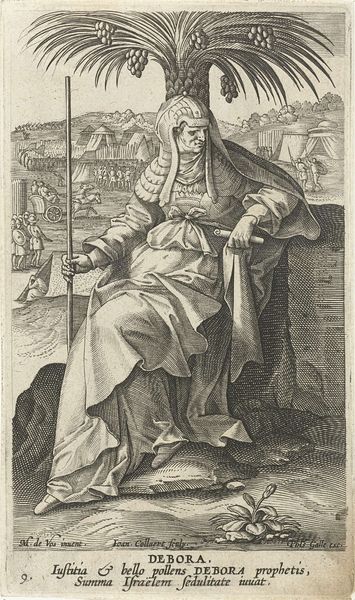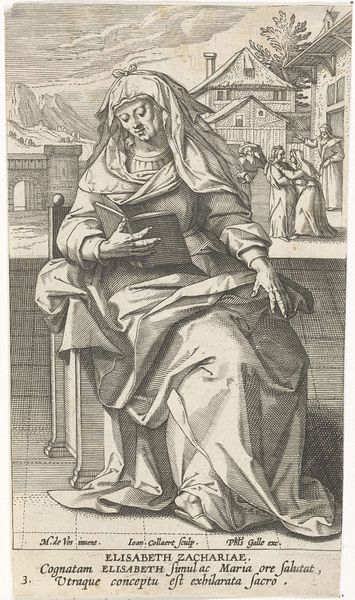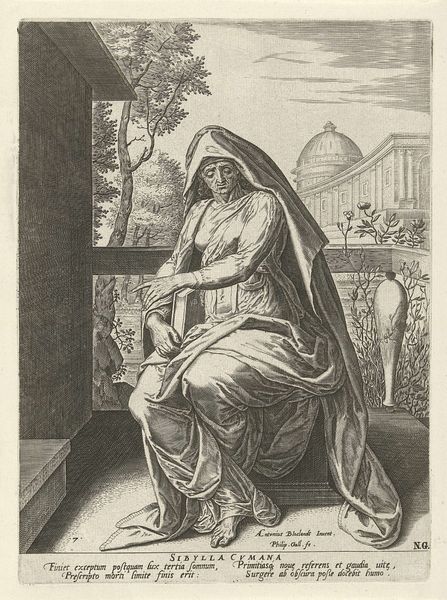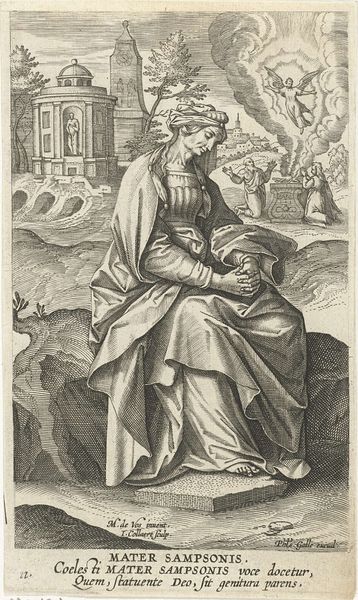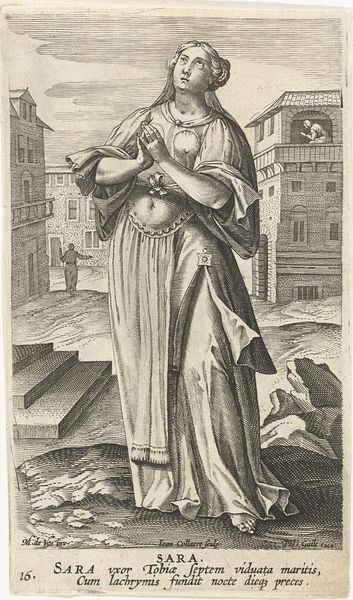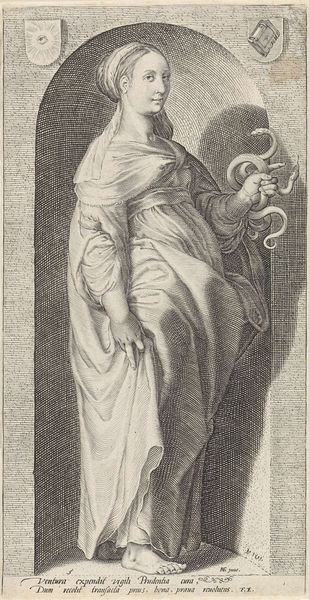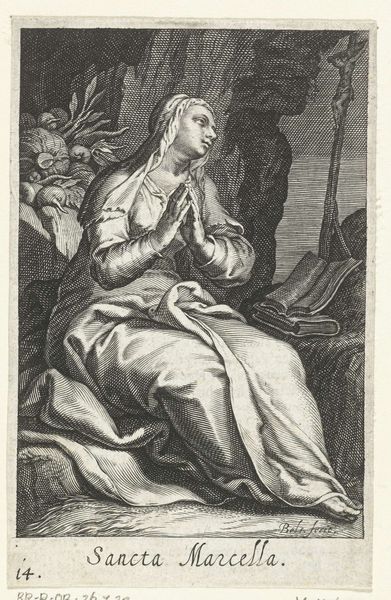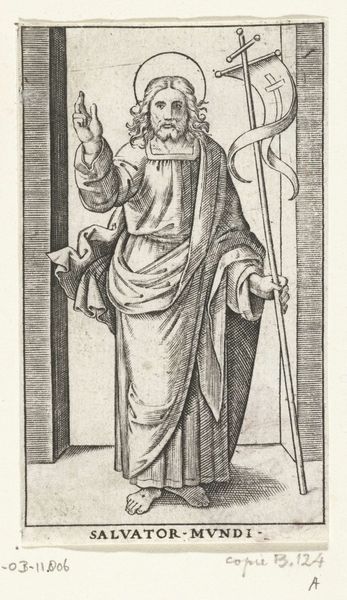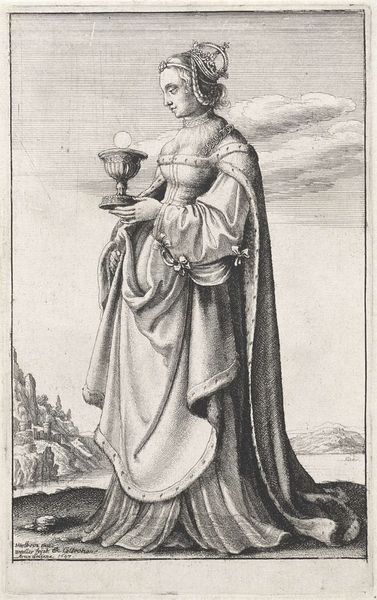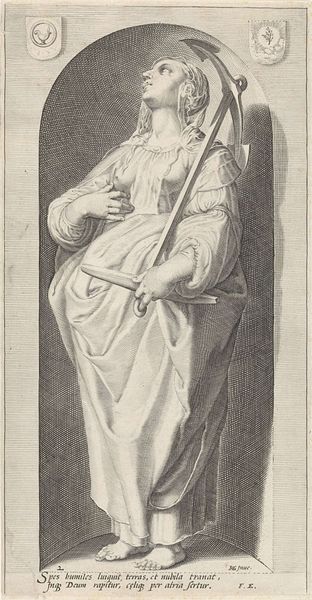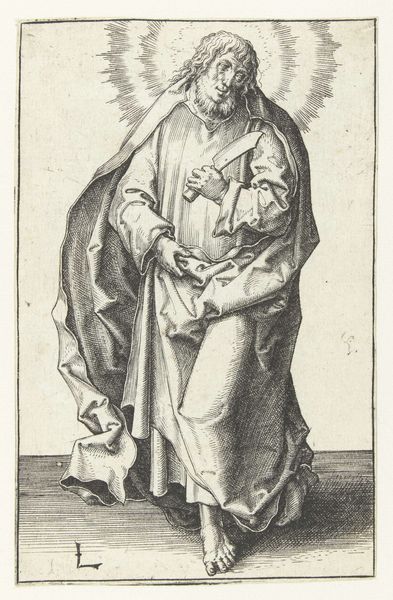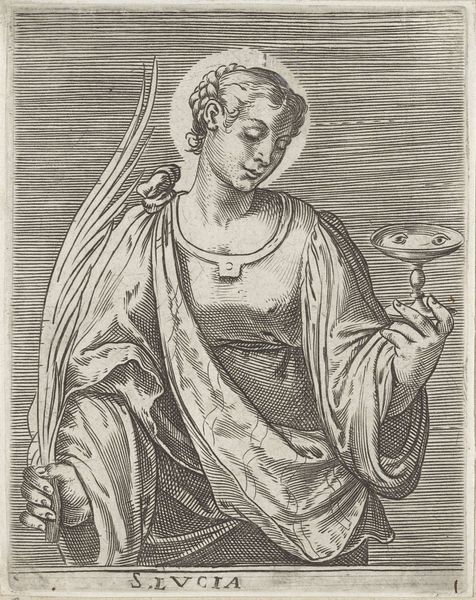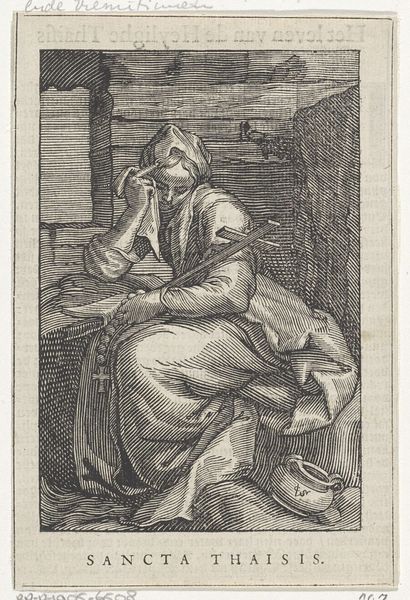
print, engraving
#
portrait
#
baroque
# print
#
old engraving style
#
portrait drawing
#
engraving
Dimensions: height 153 mm, width 90 mm
Copyright: Rijks Museum: Open Domain
Curator: What strikes me immediately about this piece is the incredible detail achieved through the engraving technique. The way the light plays across the fabric of Hanna’s garments is masterful. Editor: Indeed. We're looking at "Hanna de profetes", created between 1595 and 1599 by Karel van Mallery. This engraving is part of the Rijksmuseum's collection, and I'm captivated by its placement of a biblical figure in the context of the late 16th century and its impact on the perception of religious devotion. Curator: Notice how the burin work defines the textural contrasts - the smoothness of the architectural backdrop, especially compared to Hanna’s ruffled collar, draws my eye right in. The labor involved in this process speaks volumes. It's all about meticulous repetition, line after line. Editor: Absolutely, the context is also shaped by how the artist and printer, likely part of a workshop, contributed to spreading these religious images for personal contemplation. Furthermore, what can we read into Hanna as the emblem of the modest yet powerful prophetess for a specific demographic during the rise of the printing press? Curator: And those textures help build a realistic character. A moment of personal reflection. Looking closer at those fine lines again – seeing the aging process expressed so intricately reminds us of the accessibility of prints at the time. We need to consider both the artistry, labor, and wider consumption practices. Editor: The institution obviously plays a central role. It shapes what’s being valorized through its curation. How did an image like this circulate and shape early modern understandings of devotion or femininity? Was it connected to religious reformations of the era? And what choices have we made to bring this particular piece, among so many, into public view today? Curator: All excellent questions. Ultimately, this artwork allows us to see devotion through both the labor and dissemination of image-making at the turn of the 17th century. Editor: Yes, examining its journey – from conception to its current position on the museum wall – is crucial to appreciate both its artistic merit and historical meaning.
Comments
No comments
Be the first to comment and join the conversation on the ultimate creative platform.
